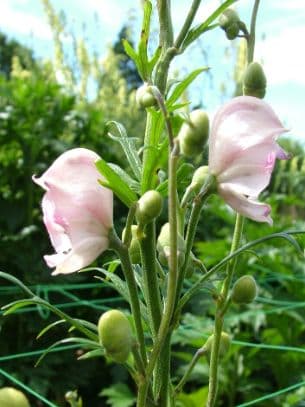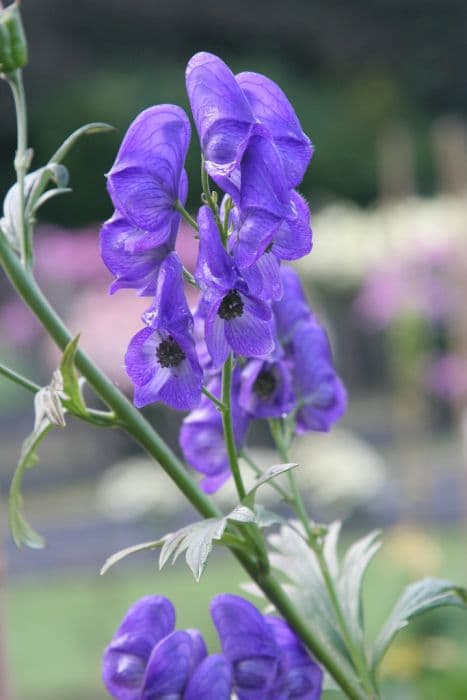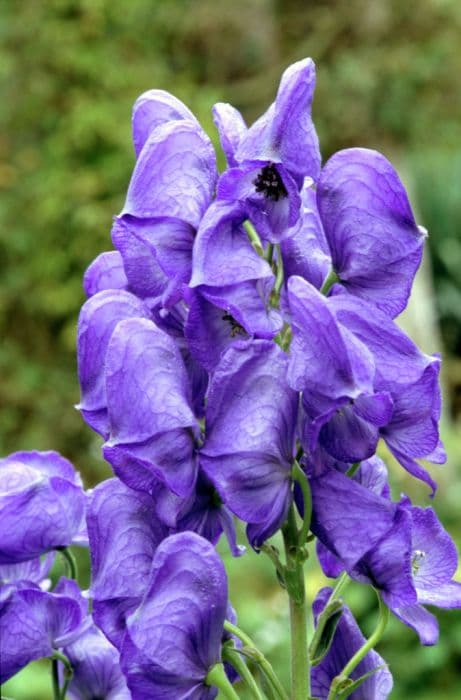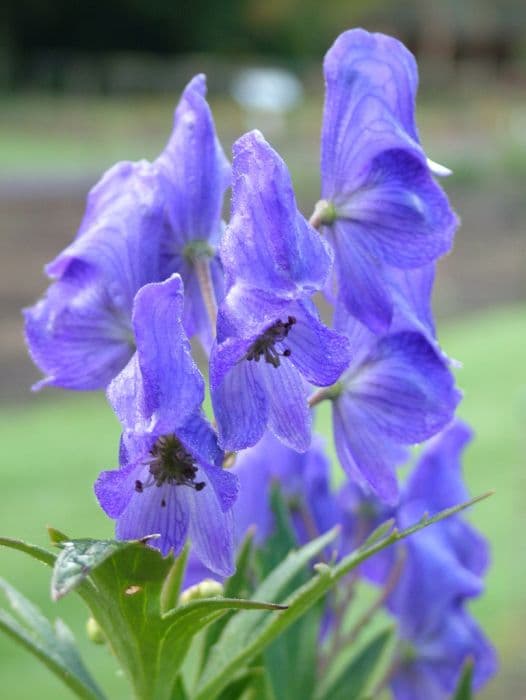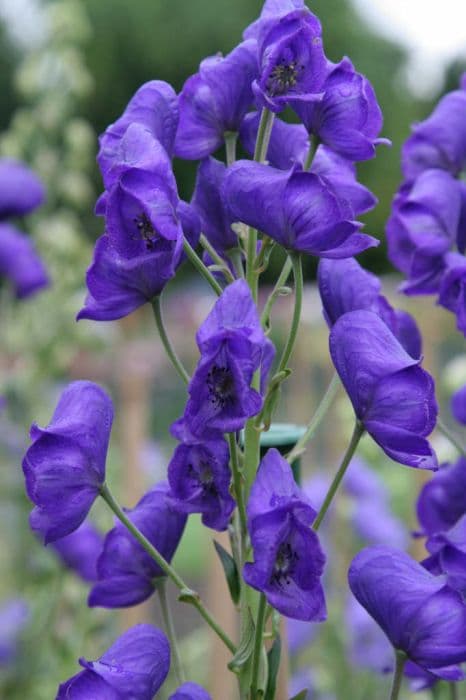Clematis Filigree Clematis Filigree = 'Evipo029' (PBR) (EL)
![clematis [Filigree]](/_next/image?url=https%3A%2F%2Fplants-admin.emdemapps.com%2Fimages%2Fplants%2F%2Fimages%2F604b607f6a797.png&w=3840&q=75)
ABOUT
Clematis Filigree, known for its exquisite blossoms, is a captivating climber with a unique appearance. It boasts a delightful profusion of flowers that present a delicate, airy quality, as the name 'Filigree' suggests. Each bloom exhibits a soft lavender hue, contributing to its gentle and sophisticated look. The petals are gracefully shaped, curving outwards to reveal their mildly ruffled edges, which add an ornamental charm to the plant. The distinct feature of Clematis Filigree lies in its partially translucent petals which catch the light, giving the flowers an ethereal glow and a silken sheen. This transparency is particularly noteworthy as it allows the subtle veins on the petals to be visible, creating a pattern reminiscent of fine lacework. At the center of each flower, a cluster of contrasting yellow stamens provides a vibrant focal point, drawing the eye and accentuating its delicate beauty. These stamens stand out against the pale backdrop of the petals, giving an added burst of color to the bloom. Clematis Filigree's leaves are relatively simple yet visually appealing. They are typically a rich green color that forms a luscious backdrop for the flowers, showcasing the signature lightness of the blooms to full effect. The leaves lend a steady green vista that supports and highlights the more transient beauty of the blooms throughout their flowering season. These characteristics together create a display that is both graceful and eye-catching, securing Clematis Filigree's place as a cherished addition to various garden settings, where it contributes an element of enchantment and whimsy without overwhelming its surroundings with excessive bulk. Its appearance encapsulates a blend of finesse and charm, making it a favorite among gardeners and plant enthusiasts who appreciate the subtler aspects of floral beauty.
About this plant
 Names
NamesFamily
Ranunculaceae
Synonyms
Clematis Filigree, Filigree Clematis
Common names
Clematis 'Evipo029' (PBR) (EL)
 Toxicity
ToxicityTo humans
Clematis, generally known to have some level of toxicity, can lead to mild or moderate symptoms when ingested by humans. The plant contains irritant glycosides, which upon contact or ingestion can cause mouth irritation, stomach pain, vomiting, diarrhea, and in some cases, more serious symptoms. Handling the plant can also lead to skin irritation in some individuals. While it's not usually life-threatening, it's still advisable to avoid ingestion and to wear gloves when handling the plant to prevent irritation.
To pets
Clematis is also known to be toxic to pets, such as dogs and cats. When ingested, it can cause symptoms including salivation, vomiting, diarrhea, and in severe cases, ataxia or tremors. Pets may also experience mouth and gastrointestinal irritation. If a pet ingests any part of the Clematis plant, it is recommended to seek veterinary attention to manage and alleviate the symptoms.
 Characteristics
CharacteristicsLife cycle
Perennials
Foliage type
Deciduous
Color of leaves
Green
Flower color
Pale blue
Height
2-3 feet (60-90 cm)
Spread
1 feet (30 cm)
Plant type
Climber
Hardiness zones
4
Native area
Cultivar
Benefits
 General Benefits
General Benefits- Decorative Appeal: Clematis Filigree offers attractive silvery-blue flowers that add a unique color and decorative touch to gardens.
- Compact Growth Habit: Being a compact climber, it's suitable for small gardens or growing in containers on patios and balconies.
- Long Blooming Period: It has a long flowering season, providing a display of blooms from late spring to early autumn.
- Low Maintenance: This variety of clematis requires minimal pruning and care, making it ideal for gardeners of all skill levels.
- Versatility: It can be trained to climb trellises, fences, and arbors or can be allowed to cascade for ground cover or in hanging baskets.
- Attracts Pollinators: The flowers can attract bees and butterflies, contributing to the pollination of your garden.
- Improves Garden Aesthetics: It can help to create an atmosphere in the garden with its graceful foliage and climbing habit.
- Seasonal Interest: Clematis Filigree adds interest throughout the growing season with its changing foliage and flower color.
- Combinability: It pairs well with other plants, allowing for beautiful garden compositions.
- Durable: This clematis is known for its hardiness and durability, able to withstand various climates with proper care.
 Medical Properties
Medical PropertiesThis plant is not used for medical purposes.
 Air-purifying Qualities
Air-purifying QualitiesThis plant is not specifically known for air purifying qualities.
 Other Uses
Other Uses- Clematis Filigree can be used as a natural dye for fabrics, giving a subtle greenish-yellow hue when processed properly.
- This plant's flexible stems can be woven into small crafts like decorative baskets or wreaths when they are young and pliable.
- Gardeners sometimes use the dried vines of Clematis Filigree for creating natural trellises for other climbing plants.
- The silky seed heads can be collected and used in dried floral arrangements for an interesting and delicate texture.
- Photographers and artists may use the intricate blooms as subjects or inspiration for botanical art and close-up photography.
- Clematis Filigree can serve as a subject for scientific studies on pollinator preferences due to its distinctive flowering patterns and attractiveness to bees and butterflies.
- The plant can be trained to grow over unsightly fences or walls, serving as a living screen that adds beauty while providing privacy.
- Its twining growth habit makes it suitable for decorating garden statues or other features, lending them an aged or whimsical appearance.
- During the holidays, the vines and flowers of Clematis Filigree can be incorporated into festive decorations, such as Christmas garlands or centerpieces.
- Enthusiasts of miniature gardens or fairy gardens can use the small-sized Clematis Filigree to create a scaled-down landscape effect.
Interesting Facts
 Feng Shui
Feng ShuiClematis is not used in Feng Shui practice.
 Zodiac Sign Compitability
Zodiac Sign CompitabilityClematis is not used in astrology practice.
 Plant Symbolism
Plant Symbolism- Ingenuity: Clematis varieties are known for their skilled climbing ability, and the Clematis Filigree, with its intricate growth pattern, symbolizes cleverness and intellect in navigating life's complex paths.
- Artistic Inspiration: The ‘Filigree’ name suggests a delicate and detailed work of art, making this plant a symbol for creativity, inspiration, and the beauty in detailed craftsmanship.
- Mental Agility: The lightweight and versatile nature of the Clematis Filigree's growth alludes to mental agility and flexibility in thoughts and ideas.
- Spiritual Ascension: As a climbing plant that reaches towards the sky, the clematis often embodies spiritual growth and the journey towards higher understanding.
- Perseverance: Clematis plants can thrive and adapt in various conditions; Clematis Filigree represents the ability to persevere and flourish despite challenges.
 Water
WaterFor the Clematis 'Filigree', regular watering is important, especially during the first season of planting to establish a deep root system. Aim to water deeply about once a week, providing the plant with approximately one gallon of water each time. Adjust the frequency based on weather conditions; during hot, dry periods, you may need to water twice a week. Allow the top inch of soil to dry out between waterings to prevent overwatering.
 Light
LightClematis 'Filigree' thrives best in full sun to partial shade. The ideal spot would be where the plant can receive at least six hours of sunlight a day, with some afternoon shade in hotter climates. Ensure the roots are shaded, either with mulch or low-growing plants, to keep the root zone cool.
 Temperature
TemperatureClematis 'Filigree' can tolerate a wide range of temperatures, from approximately -20°F to 100°F, but it flourishes in the milder range of 50°F to 75°F. The plant is hardy and can survive winters down to USDA zone 4, but ensure it's well-mulched to protect the root system from freezing.
 Pruning
PruningClematis 'Filigree' benefits from annual pruning to promote healthy growth and flowering. It's classified as Group 3 for pruning, meaning it blooms on current year's growth and should be cut back hard in late winter or early spring. Prune stems to 6 to 9 inches above a pair of strong buds to encourage vigorous new growth.
 Cleaning
CleaningAs needed
 Soil
SoilClematis requires well-draining, fertile soil with a neutral to slightly alkaline pH, ideally between 7.0 and 7.5. A best soil mix for clematis could consist of one part garden soil, one part compost or well-rotted manure, and one part gritty material such as perlite or fine bark chips to improve drainage.
 Repotting
RepottingClematis plants, generally being vigorous climbers, often do not require frequent repotting and can be left undisturbed for years. However, if the Clematis is outgrowing its pot or showing signs of stress, it can be repotted in the spring or early summer every 3-4 years.
 Humidity & Misting
Humidity & MistingClematis plants prefer an outdoor environment and usually do not require specific humidity levels to thrive, making them quite adaptable. They are often more concerned with soil moisture levels rather than air humidity.
 Suitable locations
Suitable locationsIndoor
Place clematis in bright, indirect light with proper support; keep soil moist.
Outdoor
Ensure full sun to part shade, fertile soil, and space for climbing.
Hardiness zone
4-9 USDA
 Life cycle
Life cycleClematis 'Filigree' begins its life cycle as a dormant root system or from a cutting, entering a period of active growth in early spring where it develops new stems and foliage. As temperatures rise, it progresses to the flowering stage, typically blooming in late spring to early summer with dainty, silvery-blue flowers. After flowering, the plant may produce feathery seed heads, which persist into the autumn, contributing ornamental value even after blooms have faded. In preparation for winter, Clematis 'Filigree' will undergo senescence, with aerial parts dying back, while the root system remains alive in a state of dormancy. This period of dormancy is crucial as it conserves energy for the next season's growth. The cycle resumes the following spring when new shoots emerge from the crown at the soil surface, repeating the growth, flowering, and dormancy stages.
 Propogation
PropogationPropogation time
Spring to Early Summer
The Clematis Filigree, known more commonly as Clematis 'Evipo029', is most effectively propagated through stem cuttings. The ideal time for taking cuttings is in late spring to early summer, when the plant is in active growth and the stems are not yet woody. To propagate, a gardener should select a healthy stem with at least three sets of leaves, and cut a piece about 4 to 6 inches (10 to 15 centimeters) long just below a leaf node. The lower leaves are removed and the cut end is dipped in rooting hormone to encourage root growth. The cutting is then placed in a pot with well-draining soil, and the pot is kept in a warm, bright location without direct sunlight. Maintaining the soil's moisture without overwatering is crucial, and roots typically begin to form within a few weeks. Covering the pot with plastic to create a greenhouse effect can speed up the rooting process.

